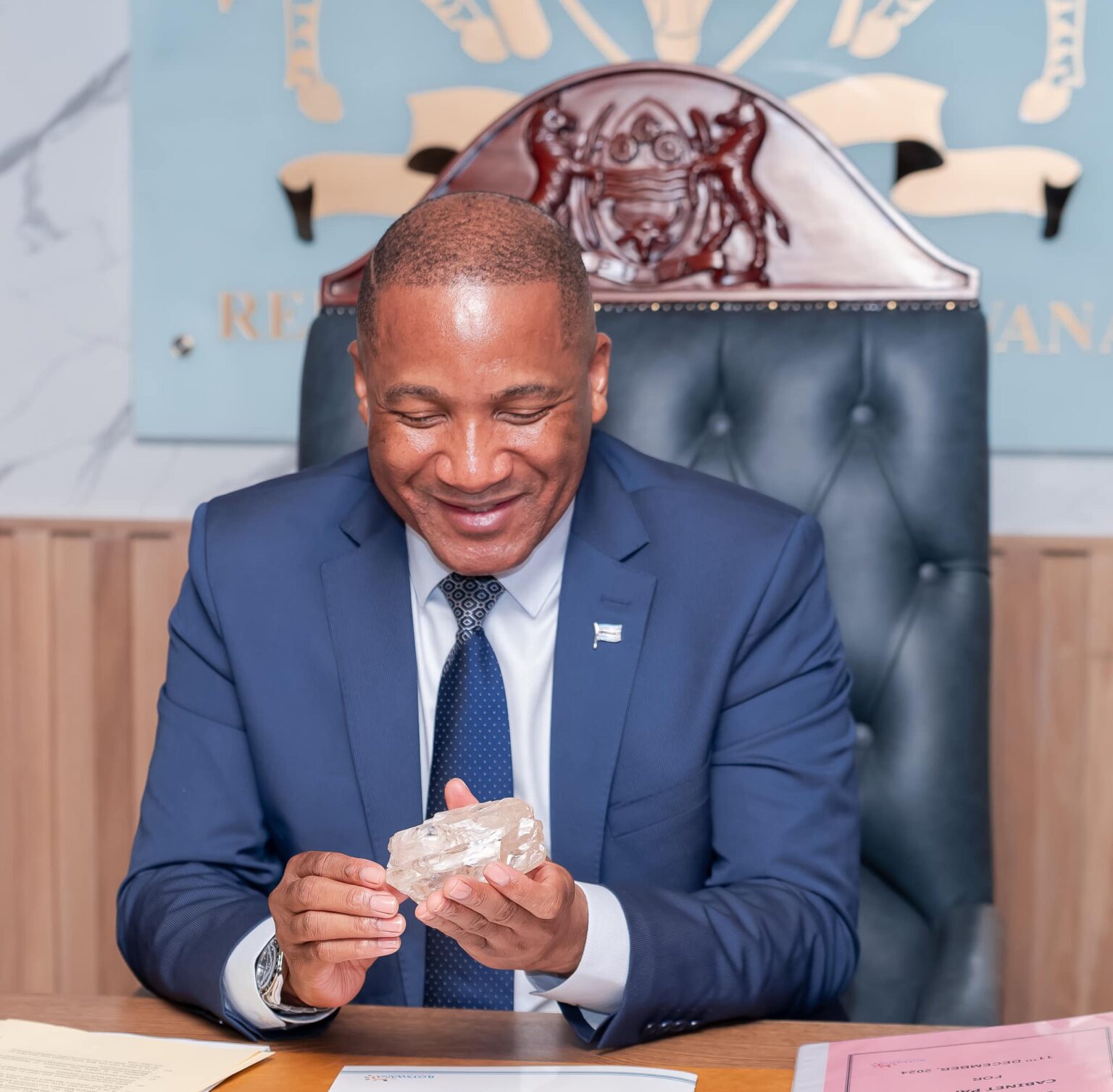Botswana, a global leader in diamond production, is facing a pivotal moment as demand for natural diamonds falters. De Beers, Botswana’s key partner in the diamond industry, is sitting on a $2 billion inventory pile—the largest since the 2008 financial crisis—due to sluggish rough diamond sales. This decline in demand has created an urgency for Botswana to reimagine its diamond strategy and explore new markets and opportunities. Here’s how Botswana can navigate this challenge and secure its diamond legacy.
1. Leverage Ethical Sourcing and Sustainability
• Capitalizing on Ethical Practices: Botswana’s diamonds are already mined under strict ethical and environmental standards. With sustainability gaining prominence among global consumers, Botswana can market its diamonds as ethically sourced gems that support the socioeconomic development of the country.
• Botswana Diamond Brand: By creating a national diamond brand, Botswana can build a direct connection with consumers, showcasing the unique origin and positive impact of its diamonds.
2. Tap Into Emerging Markets
• Opportunities in Asia: Markets like China and India, where diamond consumption is on the rise, present significant opportunities. Botswana can work with retailers, influencers, and marketers to position its diamonds as aspirational products tailored to these regions’ cultural preferences.
• Diversify Geographically: While traditional markets like the U.S. and Europe face economic headwinds, Botswana can target emerging markets in Southeast Asia, Africa, and Latin America for growth.
3. Adapt to the Shift Toward Lab-Grown Diamonds
• Embrace Innovation: With lab-grown diamonds gaining traction for their affordability and perceived environmental benefits, Botswana could diversify its portfolio by investing in this growing market segment.
• Dual Offerings: While continuing to champion natural diamonds, Botswana can explore partnerships or create its own line of lab-grown diamonds, catering to a broader spectrum of consumer preferences.
4. Enhance Local Value Addition
• Expand Cutting and Polishing: Instead of exporting rough diamonds, Botswana can develop its local diamond cutting and polishing industry, increasing value addition within the country.
• Botswana-Made Jewelry: Promote jewelry manufacturing locally to produce finished products, enabling Botswana to capture more of the downstream value in the diamond supply chain.
5. Collaborate with Luxury Brands
• Strategic Partnerships: Partnering with iconic luxury brands like Tiffany & Co. or Cartier can elevate Botswana’s diamonds to the global stage, appealing to high-end consumers.
• Exclusive Collections: Collaborate on exclusive diamond collections that emphasize sustainability and Botswana’s unique story.
6. Develop Tourism Around Diamonds
• Diamond Tourism: Botswana can integrate diamonds into its thriving tourism sector by offering mine tours, workshops, and luxury shopping experiences.
• Showcase Heritage: Establishing diamond museums or heritage centers can educate tourists and consumers about Botswana’s diamond history and its contributions to the country’s development.
7. Invest in E-Commerce and Digital Marketing
• Sell Direct to Consumers: Launching an online platform for diamond sales can help Botswana bypass intermediaries and reach global consumers directly.
• Target Younger Audiences: Use digital channels like social media and influencer marketing to connect with millennial and Gen Z consumers, emphasizing sustainability and unique storytelling.
8. Promote Diamonds as Investments
• Position as a Store of Wealth: Diamonds can be marketed as stable, long-term investment assets, similar to gold. Educational campaigns can inform consumers about the financial benefits of owning diamonds.
• Collaborate with Financial Institutions: Work with banks and investment firms to create diamond-backed investment products.
9. Respond to Global Trends
• Customization and Personalization: Modern consumers value unique and customized products. Botswana can work with designers to create bespoke jewelry collections featuring its diamonds.
• Certifications for Trust: Ensure all diamonds meet globally recognized ethical and sustainability certifications, such as the Kimberley Process or Responsible Jewellery Council (RJC) membership.
10. Mitigate the Impact of De Beers’ Stockpile
• Strategic Discussions with De Beers: Botswana’s partnership with De Beers remains critical, but new strategies are needed to address the inventory surplus. This includes exploring flexible pricing models, alternative markets, and innovative marketing campaigns to boost demand.
• Diversify Partnerships: While maintaining ties with De Beers, Botswana could explore additional partnerships with other global diamond companies or establish its own distribution channels.
The $2 billion stockpile of diamonds at De Beers highlights the pressing challenges facing Botswana’s diamond industry. However, by embracing innovation, ethical marketing, diversification, and strategic partnerships, Botswana can unlock new opportunities and strengthen its position in the global diamond market. With a focus on sustainability, local value addition, and emerging markets, Botswana has the potential to turn this dilemma into a defining moment of growth and resilience for its diamond legacy.





